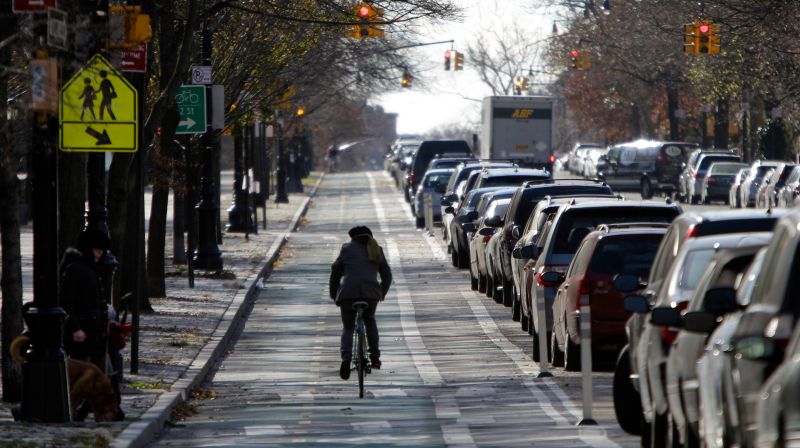
Back in 2007, New York City decided to remedy one of its many transportation and infrastructure issues and set out to make cycling in the city feel safer, and they did by introducing what’s called a protected bike lane.
A protected bike lane is just what it sounds like—it’s a biking lane designed to be protected from the flow of traffic by a strip of parked cars.
Since it takes up more space, it’s usually a controversial proposal as it eats into the amount of parking on the city’s streets, but the increased protection means riders feel safer cycling, which leads to more people cycling. More people cycling is good because it relieves some of the pressure from the city’s other forms of public transportation and reduces congestion on the roads.
Vox talked with Janette Sadik-Khan, former head of NYC’s Department of Transportation and current Chair of the National Association of City Transportation Officials, to explain how much of an impact the new protected bike lanes had in its latest video:
In 2007, New York City ran a six-block pilot of its protected bike lane on 9th Avenue. It was one of the first bike lanes of this type in the U.S. The bike lane ran down the left side of the street, and parking space was only sacrificed on the stretches of road with a left turn lane. Separate, staggered traffic signals were put in place to stagger traffic flow between cars and cyclists.
Advertisement
Sadik-Khan said the pilot showed crashes with injuries drop by nearly 48 percent, retail sales along the pilot bike lane increased 49 percent compared to an average increase of just over 30 percent in the control sites, traffic flow improved, and cyclists felt safer in a dedicated, protected lane.
The pilot was such a success the city immediately began expanding and there are now over 100 miles of protected bike lanes out of 1,200 miles of dedicated bike lanes.
The video mentions a 2012 survey in Oregon, which found 56 percent of survey subjects said they were interested but concerned about cycling in cities. Sadik-Khan claims the changes NYC made didn’t cost that much, and stresses that cities that invest in this group by making existing infrastructure smarter and safer will better handle their growth.













